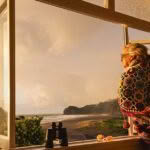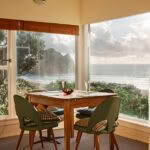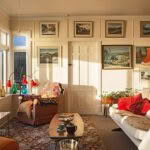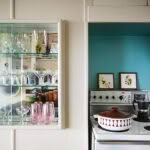Inside journalist Melanie Reid’s seafront bach-turned-home at Piha Beach
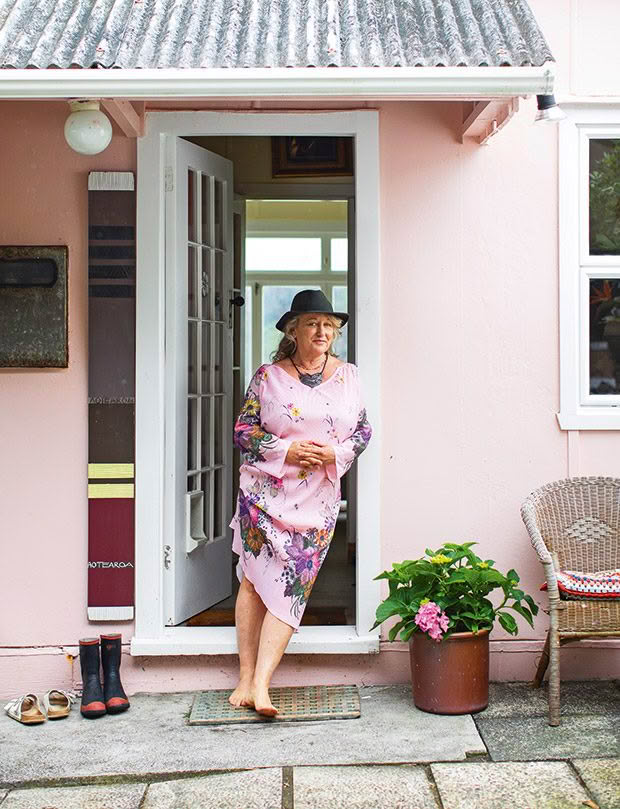
Melanie Reid has painted the rear of her bach a customized pink, based on a Resene colour called Sakura. The hydrangea, which ties in with the rosy theme, was given to her by Des Thomas, brother of Arthur Allan Thomas, and the vertical painting is by her close friend, artist Tracey Tawhiao.
This well-known investigative reporter keeps an eagle-eyed watch over situations — in more ways than one.
Words: Claire McCall Photos: Tessa Chrisp
Many want to change the world when young. Not many do. But for broadcast journalist Melanie Reid, whose first serious act of activism was halting a massive industrial development on the outskirts of her hometown of Queenstown aged 17, that fire inside has never died.
Her drive to dig deeper, battle harder and stay the course has only strengthened. “Getting older is an upward spiral, not a downward spiral; every year, you get smarter and more onto it,” she says.
Her canniest move yet might just be buying this 1940s seafront bach in Piha after already convincing the original family owners to rent it to her a decade earlier.

Melanie loves to throw open the living room windows and breathe in the salty sea air. The saffron-coloured chair was given to her mother on her 21st birthday, “and she gave it to me when I turned 40”, says Melanie. Opposite it, a big comfy chair, covered in crochet throws, came with the house, while the Axminster carpet (called Summer Bouquet) is a classic.
“I was lucky, the owner wanted me to buy it. It was precious to him, and he knew how much I loved it and knew I wouldn’t bowl the house to build a show home or knock over the pōhutakawas to make way for a garage.”
The truth is, there simply isn’t a better tūrangawaewae (foundation) for Melanie in the North Island. Not only does the scenery — Lion Rock rising sharply from the iron sand — echo in miniature the mountainous backdrop of her Central Otago childhood, but the relative remoteness gives this community a self-sufficiency and alternative outlook that appeals to her viscerally.
“Piha has such dramatic landforms; the built environment should always be subservient to that,” she says.
The young Melanie grew up on horseback, exploring back-country rivers and mountain passes around Queenstown, staying in huts in the summer and generally basking in the spectacular freedom of it all. Her parents, both teachers, had five children and the family grew up in a heritage house just outside the town.
- With its elevated views over Piha Beach, the dining room in Melanie Reid’s 1940s home is an inspiring setting for meals, but recently she also has been working from home.
- Melanie perches her laptop on the table, handcrafted by the original homeowners — the Lamonts. The 1950s dining chairs are reupholstered in green marine fabric, and the light fitting, also mid-century, was a gift from her older sister, bought in Ranfurly.
- The 1970s sofa was rescued from a “desperate student flat” and is now is the rockstar centrepiece of the small living room. The walls are laden with White’s Aviation paintings, the iconic hand-coloured scenic photos of New Zealand taken from 1945 to 1988. “I’ve been collecting them since I was 17.” The three-headed orange lamp in the corner (left) was bought from a retro shop in Alexandra.
- An old Shacklock stove is still doing the business. “I’ve often been asked, ‘Don’t you want a new oven?’ and my answer is always, ‘Why? This one is absolutely mint’,
Melanie describes her mother as “a superstar mum” who could turn her hand to anything. She could feed a crowd at the drop of a hat, whip up her daughter’s formal ball dress (and a few for her friends), all the while writing a speech for a National Toastmistress meeting.
Her father she calls “a bit of a sporting legend”. He was an all-around good sort who came from gold-mining stock and excelled at sport (he was in the 1957 Otago Ranfurly Shield team). Capability, then, was in her genes. But feistiness, too.
“Mum was a feminist and environmentalist. She bought us up to be independent.” Melanie was wearing a T-shirt from age 12 that said, ‘A woman’s place is in the House of Representatives.’”
School reports show she was talkative in class and passionate — although not about academia. She couldn’t wait for the final bell to ring so she could return to where her heart belonged: with her equine best friends.
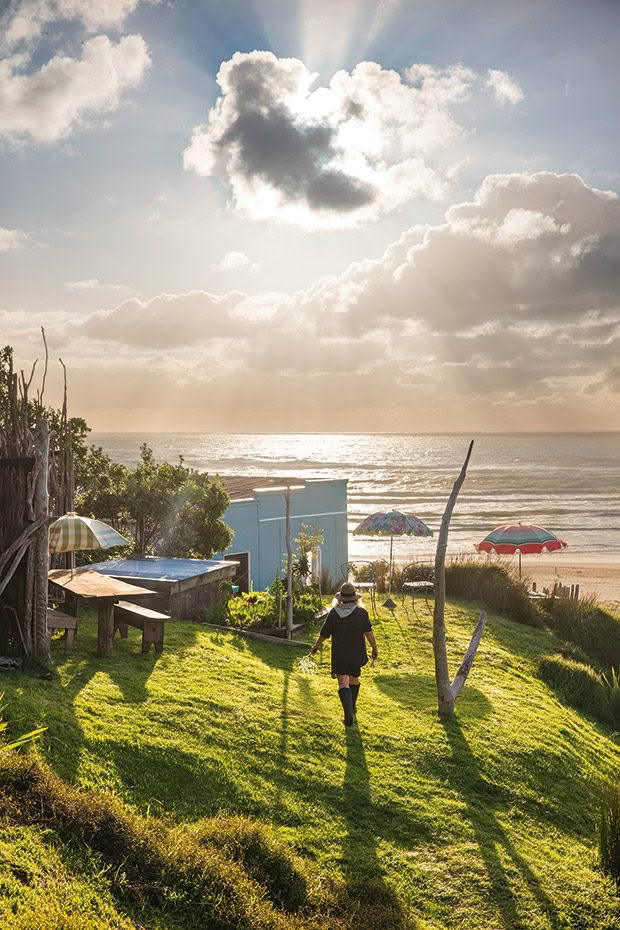
Vintage umbrellas mark the spots where sundowner decks have been set up on the property. “The freedom of bach living is beyond measure. Outside, nature dictates the décor and, inside, you don’t have to have matching drapes or matching plates,” says Melanie. She removed “truckloads” of weeds, including agapanthus, lupins and cape ivy from the 4000-odd square-metre property. “My focus now is to propagate and grow seedlings and replant natives.”
After finishing her journalism degree in Wellington, Melanie had a short-start career in film, which included a stunt-riding gig in the George Lucas movie Willow. Then, a television training course pivoted her from film into video journalism, and ultimately a reporting role that grabbed her, held her and never let her go.
She counts the early years of TV3 as the most exciting of her life. It was late 1989 when Melanie joined South Island bureau chief Mark Jennings in the Christchurch office of the upstart channel. “Back then, TVNZ’s people were so privileged — they had the power of the state behind them,” she explains. “And viewers had their remote controls rusted onto TVNZ 1.”
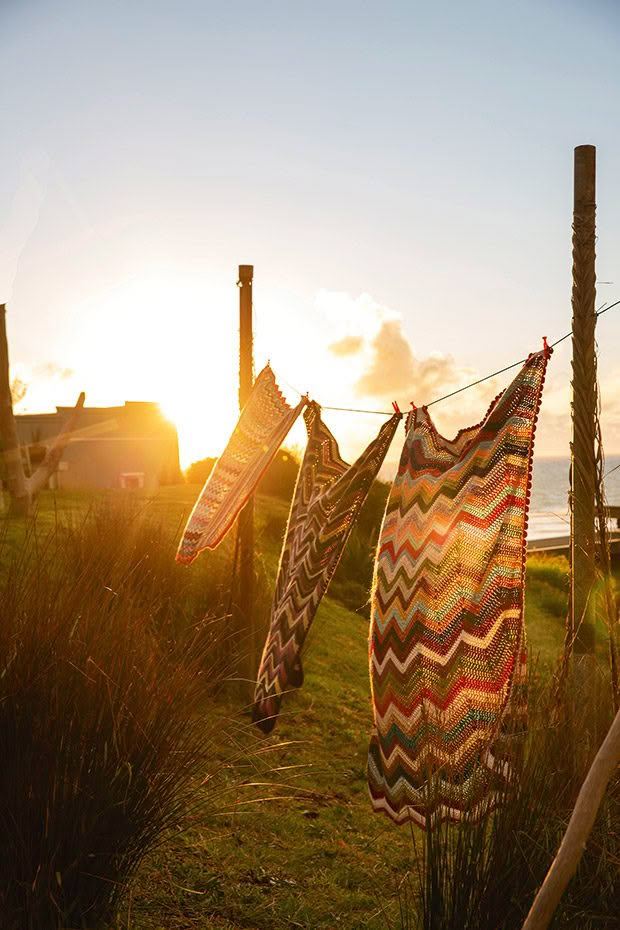
Melanie collects crochet and says she has enough stashed away in cupboards to have a large-scale art exhibition. “Crochet is great for a quick interior décor transformation, is brilliant outside for a bit of warmth on a breezy night, and each piece is its very own amazing work of art… multifunctional fabulousness.”
It was a real David versus Goliath tale. With minimal financial backing, TV3 reporters stayed in campsites or with friends to cover out-of-town stories or wake at 4am to drive to a location.
“They were crazy, loose times, but I worked with the cream of the crop. We were underdogs, hungry, edgy and determined, and we all became pretty good at what we did,” she says.
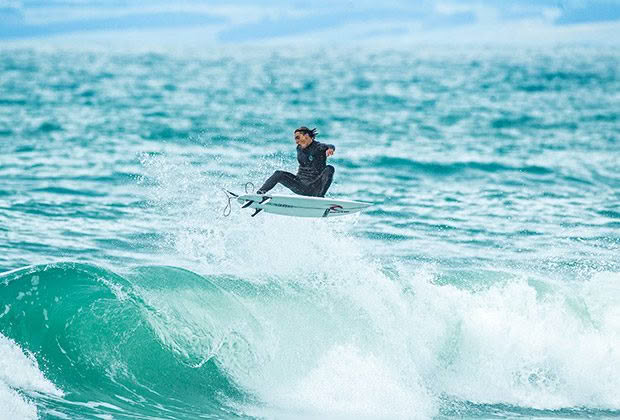
Elliot is a professional surfer who has been competing and traveling the world since age 16. He has four national surfing championship titles to his name, including the 2020 Open Men’s, and multiple Australasian pro-junior podium finishes. He has also successfully tackled some of the world’s most treacherous surf breaks. It’s often said that surfing careers can be made or broken in the waves of Hawai’i’s North Shore. Elliot reached the quarter finals at what is considered the world’s most dangerous wave — Pipeline — against many of the planet’s best surfers. It was the best result by a Kiwi surfer at Pipeline since the legendary Allan Byrne in 1981.
Scooping an interview with the surviving pilot when two Cessnas 207s collided over Milford Sound in 1989 was one of the first big exclusives for Melanie; being the only journalist to interview daycare worker Peter Ellis was another. In November 1990, when the mass shooting at Aramoana happened, she and Jennings chartered a plane to cover the story, and later she went undercover at Gloriavale, posing as an agricultural student.
They were heady days that brought her great respect and fantastic opportunity, including the chance to travel through Russia to make a documentary with aviation legend Sir Tim Wallis. In 1998, a promotion to deputy director of news and current affairs at the channel meant a move to Auckland was in the offing.
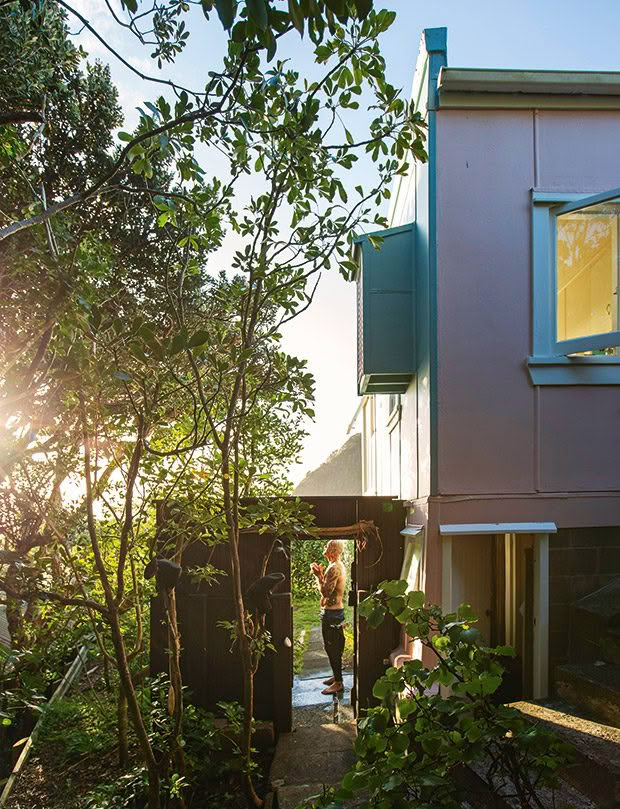
There isn’t much that floors this tenacious journo, who frequently butts heads with authority, but landing up in a rented house in Grey Lynn with a young baby in tow (by then, she had met her son’s father, Jemarl) to take up the role, stopped her momentarily in her tracks.
She was suddenly 33, holding down a high-powered job and pushing her son in a pram around suburbia. She missed her rural roots — and her horses. “I thought, ‘Oh my god, what have I done?’”
A trip to Piha was her salvation. The instant she traveled the narrow, windy road and saw the wild waves booming against the headland and pounding the beach, she knew. When she spotted a for-rent notice in the local store, she snapped up an old shack among the trees for $100 a week and spent her time between city and surf.
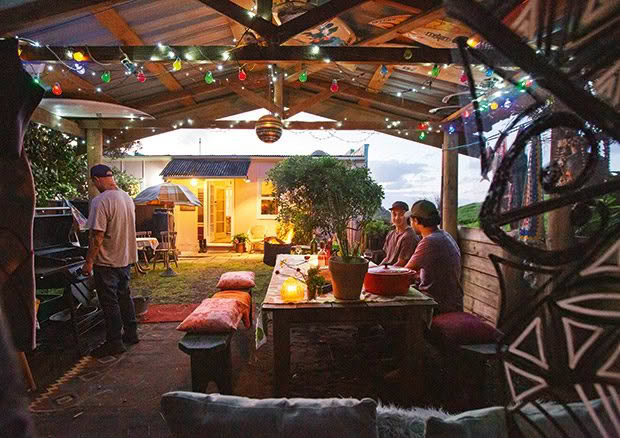
These days, Melanie lives the dream full time in a house that was always her favourite in the seaside village. Her lockdown office has a killer view in a pōhutukawa frame that changes by the minute. When the wind blows offshore, the surfers come out. She watches them bob on the swell like seals, waiting to catch a break.
Her son Elliot, who grew up on these waves, became a professional surfer. He travels the world to compete — although, recently, Covid-19 has driven him home.
Her art deco house nestles into a 4000-square-metre plot in a prime position. As soon as she bought it, she painted it pink at the rear but settled on an ocean-inspired blue for the front façade — a colour that is kinder to the neighbourhood.
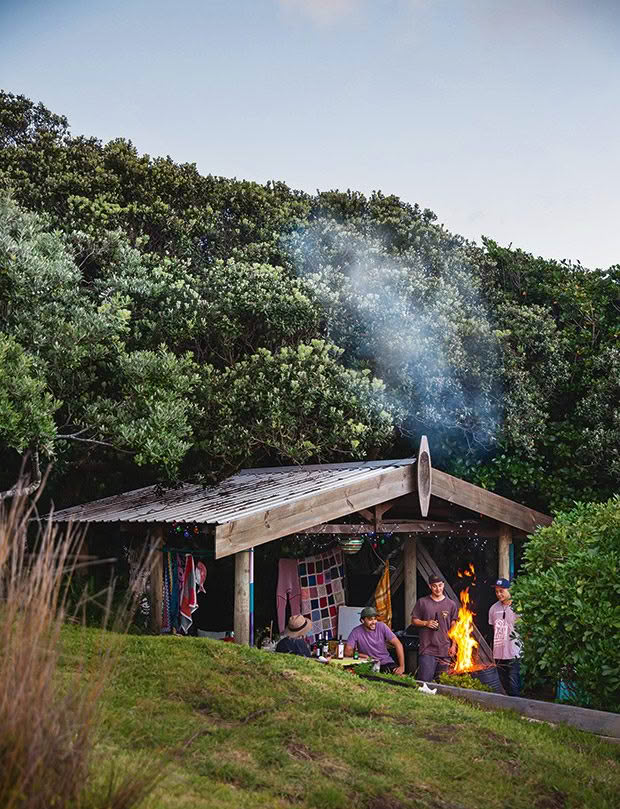
“That’s all I have done and all I intend to do,” she states categorically. She can’t understand the constant need for renovation; in fact, she finds it exhausting. Instead, she focuses her energies on clearing the site of pest plants, including agapanthus, and growing more natives.
Step inside and back in time. Axminster rugs cover the floors with groovy patterns, White’s Aviation prints cover the walls in travel nostalgia and, draped over the reupholstered 1950s furniture, crochet blankets are a colourful throwback. “I’ve never bought a new piece of furniture in my life,” says Melanie.
In the kitchen, a 1970s Shacklock oven is still in use and open shelves are lined with a mash-up of old biscuit tins, enamelware, a vintage cake-mixer and Crown Lynn. Across at the dining table, the laptop is ever flipped open as Melanie, now Newsroom’s lead investigations editor, keeps abreast of several projects she and the team have on the go.
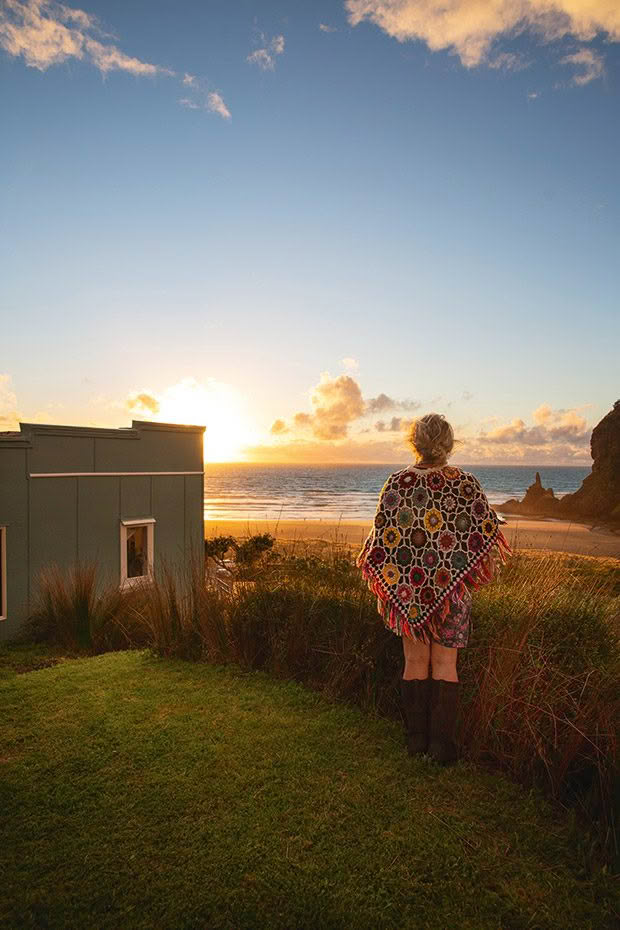
Another day in paradise comes to a gentle end. Melanie bought the crocheted poncho when she was overseas traveling with Elliot for surf competitions. “I remember being so excited, but Elliot, who was 17 at the time, just shook his head and said, ‘Why can’t I have a normal mother?’”
Some of these (such as the ongoing probes into Oranga Tamariki’s practices, including the Hastings uplift story, which reshaped New Zealand’s child welfare department) are a Sisyphean task, but her calling is to fight for those who can’t fight for themselves.
Living here, perched on the hillside connected to the endless environment, is the best office in the world. The sound of the sea fills every corner of the house. It works as the perfect antidote to her intense and high-energy job.
“I love being in my 50s,” she says. “You know how to sort the wood from the trees much faster, and you have the experience, wisdom and ability to really crack along.”
PROTECTING PIHA
Melanie is actively involved in Pest-Free Piha, a community-led initiative with the long-term aim of making Piha weed- and predator-free. In the past year, the organization has:
* Set 375 baiting stations for wasps across 300 local properties, with the result that wasp incidents have reduced by more than 70 per cent. “Wasps attack beehives, native insects and even chicks — and they can spoil a good barbecue,” says Melanie.
* Initiated working bees to remove invasive weeds and planted some 1600 natives grown in a community-wide nursery. “We now have six or seven people growing seedlings for us in their backyards.”
* Distributed subsidized traps for predator control, including trap boxes made at the Men’s Shed at Pinesong Retirement Village in Auckland’s Green Bay. In the past year, more than 900 rats, stoats and possums were caught by trapping or bait stations.
* Documented the return of native birds to the area, including dotterels (who have fledged chicks each year on North Piha Beach for the past three years). There have also been reports of grey-faced petrels returning to nest on the southern cliffs overlooking the beach — “for the first time in living memory” — and fernbirds seen at Taitomo.
THIS SUMMER I’LL BE…

Sitting on the deck with a bottle of vino while discussing the day’s surfing is a wonderful way to wind down. Melanie joins her nephew Tunui Wano (far left), Jemarl and Elliot to watch the sun set beyond the horizon.
Drinking: Little Biddy Botanical Gin from Reefton, and Rifters, made in Arrowtown.
Cooking: “Whatever catch the boys come home with, and kamo kamo.”
Reading: Gone West by Sandra Coney.
Listening to: Troy Kingi, Fran Kora, Fly My Pretties.
Playing: “Gin-nis (gin and tennis).”
Love this story? Subscribe now!
 This article first appeared in NZ Life & Leisure Magazine.
This article first appeared in NZ Life & Leisure Magazine.
